Both oil and fuel filters are designed to perform the same function but with different fluids. The oil filter works to remove particles within the oil and the fuel takes out impurities sitting in the fuel.
If either of these are clogged or not working correctly particles can reach your engine and damage your vehicle.
Oil Filter

The oil filter is a casing that holds a filter. The filter is used to remove debris that becomes mixed in with the engine oil.
If the foreign particles don’t get removed from the oil, they can damage your engine system and leave your car running poorly.
When the oil has been filtered, the engine works at its best level.
Key functions
- Improves engine performance
- Lowers the cost of car maintenance
- Enhances the lifespan of your car engine
Common Types of Oil Filters
1. Full flow
This is your primary filter. Due to this filter being less restrictive, it will filter out 100% of your oil. This type is not as restrictive because it is in line with the engine’s requirements without denying the engine the oil it needs.
2. Bypass
The bypass filter is your secondary filter and removes the finer fragments sitting in the oil. The primary full-flow and bypass filter work hand in hand to keep the engine running smoothly.
3. Thermal
First off, the oil will go through an essential filtration then that filtered oil is heated up to remove any remaining debris sitting in the oil stream.
4. Spinner
Here we have the cylindrical filter that rotates. The filter screens rotate to remove particles from the oil with centrifugal forces.
5. Convectional
The filtration material that is used in these filters is cellulose and fiberglass. This filter works the same as the bypass filter.
6. Cartridge
This is an easy-to-use, full-flow oil filter type. This type of filter is easy to check if it is connected upright. You don’t even need to remove the oil to inspect the filter. It usually doesn’t have any metal or plastic parts. So they are also environmentally friendly and easy to recycle.
7. Spin-on
This is also a full-flow oil filter. It has a steel canister and paper element, which are paired together. If you’re a DIY guy, this filter is perfect for you. The operation and installation of a spin-on filter are easy and require fewer tools. This filter is also efficient in removing pollutants from the oil.
8. Magnetic
Just like the spinner oil filter, magnetic filters work as a secondary filter to support a full-flow filter. The sole purpose of using a magnetic filter is to remove metal particles from oil. However, they’re not good at removing dust and grime.
Magnetic filters use magnetic attraction is used to trap metal particles. As a result, it can not remove non-metallic pollutants like dirt, dust, or grime effectively. The main advantage of this filter is it can serve for a very long time if you clean it regularly. Actually, you don’t need to change it at all, which can save both time and money.
Unlike many other options, magnetic filters don’t need to be replaced if you maintain them regularly, saving you time and money down the road. This type of filter features a secondary support system for better performance.
Fuel Filter
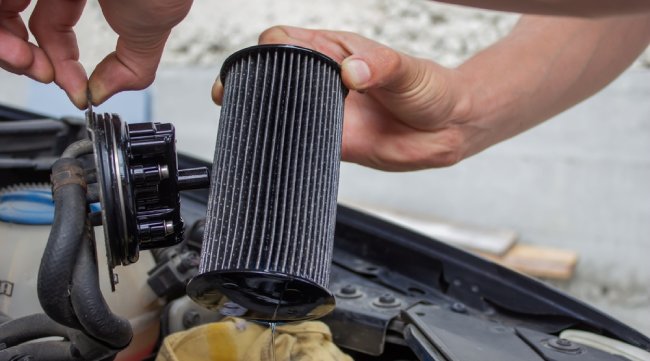
The fuel filter is essential and is responsible for removing particles from your fuel. The filter helps remove water particles, rust, paint, and dust.
If not filtered out, you will end up with a clogged-up system that will wreck your engine.
In addition, particles like rust and dirt are too abrasive and can cause too many problems for the system.
Key Functions
- It prevents the engine from overheating
- Curbs the corrosion of the fuel and engine system
- Prevents any clogs caused by particles and debris
Common Types of Fuel Filters
1. Primary
This filter works to take out larger particles sitting in the fuel. If you have a diesel system, then you will find this located near the fuel pump and tank. Any debris that is 10 microns or smaller in size will be trapped.
2. Secondary
This filter works with the primary filters and removes the particles that the first filter may have missed.
3. In-line
Your in-line filter is located in the line system. This type of filter has an outlet and inlet opening on each end. The inlet works to let in the unfiltered fuel then it will be filtered inside. It’s then filtered and released via the outlet opening.
4. Spin-on
This filter can be found at the engine. It has end notches that are threaded, making it easier to secure them in place. In addition, these filters are straightforward and quick to install.
5. Canister Fuel
The design of this filter resembles a canister. The canister-type filters have a filtrations system on the inside that screens the fuel.
6. Cartridge
This type of filer doesn’t have any plastic/metal outer shell and contains a cartridge. Cartridge fuel filters consist of structural parts, filtration media, and other essential fuel filter parts.
This filter can be used repetitively as it is a separate component that connects to the vehicle’s mating surface. You’ll just need to change the cartridge. Cartridge fuel filters are more eco-friendly than canister-type filters as it doesn’t feature plastic/metal outer shell.
7. In-Tank
This type of tank is used in most modern automobiles. It can be mounted separately or integrated into the fuel pump of the gas tank. They are generally not visible and inaccessible as they sit inside the gas tank. As a result, maintenance is relatively more difficult.
Another downside is that they are not separately replaceable when they act as a fuel pump assembly, which means it will be more expensive to replace them.
Differences Between Oil and Fuel Filters
-
Type of fluid filtered
Fuel and oil filters get used for the same function, but the difference is the fluid they use. The fuel filter takes out the particles in the fuel, and the oil filter works through the engine oil.
-
Location
The fuel system can get mounted in a few places. It will all depend on the fuel system design. The fuel system lines, the gas tank, and the engine are all hosts for fuel filters. The oil filter is limited and can only go right near the engine.
-
Function
An oil filter works to catch and remove tiny particles like dirt, sand, metal shavings, etc. An engine needs to run smoothly. A fuel filter filters out large particles like carbon molecules, which could cause problems with engine performance.
-
Size
Oil filters are mostly the same size, whatever the type. The fuel filters will vary in size depending on where they are located on the whole fuel system. Oil filters run a little bigger than fuel filters.
-
Design
The fuel filter is divided into two major parts – the housing and the filter element. The housing is typically made from carbon or plastic composite. It contains a screen to hold the paper filter media, intake pipe, and intake manifold.
The oil filter is made from aluminum alloy or steel mesh. It contains a metal canister that holds an oil-soaked foam, a metal jet plate to pump raw oil via the long rods into the canister chamber, and an external seal ring that releases trapped air.
-
Water Separator
The oil filter water separator (sometimes referred to as an oil filter separator) is a device that separates water from the oil in an engine. A typical oil filter can hold about one quart of dirty, used oil. When this dirty mixture enters the water system, it can cause problems with the engine.
The use of an oil filter water separator helps prevent these problems by acting as a sieve and separating the water.
In fuel filters, water separators work to filter and separate water and fuel. You can find these in fuel tanks of boats, cars, and airplanes. A fuel filter separator is a device that catches the gasoline “sludge” that passes through the fuel system.
-
Cleaning and maintenance
A maintenance schedule for oil filters is the amount of time it takes to replace a filter. This schedule may also include what types of oil to use and how often. It all depends on what types of oil are meant for your car. If you use synthetic or synthetic blend oils, then the changes in quality can be enough reason to change filters more frequently than average.
A general rule for how long it takes to change an oil filter is about every 4,000 miles or six months, depending on which one the vehicle manufacturer recommends. The most popular method of cleaning them is to use a DIY method. You can do this by filling up a large bowl with soapy water and adding oil filters to the mix.
In the case of the fuel filter, you’ll need an open container of fresh water, dish soap, and a sponge. First, wash the sponge with dish soap before using it to soak up any dirt or debris that is on top of or around your filter. Then pour some fresh water into the container to rinse any soap residue left behind from washing.
The best way to clean fuel filters is by using a vacuum cleaner with a nozzle that is designed explicitly for hard-to-reach areas. Another option is using compressed air or specialized brushes that work for cleaning fuel filters.
FAQs:
Q. Can You lean A Fuel Filter Without Removing It?
No, you cannot. You need to move the oil and fuel filter altogether if you want to clean and reuse it. This is not a good idea. Filters are best to be changed and replaced, not reused. Cleaning with the wrong products can cause damage to the filter and the car, and you could push particles into the filter that you cannot see.
There are ways to clean them, but they will require removing. Diesel filters are often in a bowl shape that catches water that will eventually need to get drained. The majority just need to be replaced.
Q. How Do I Know If My Fuel Filter Needs Changing?
There are a few signs to watch out for, such as your car is having trouble starting. This can indicate a clogged filter. If the car is shaking when idling, or you have low power when driving, you may need to change your filter.


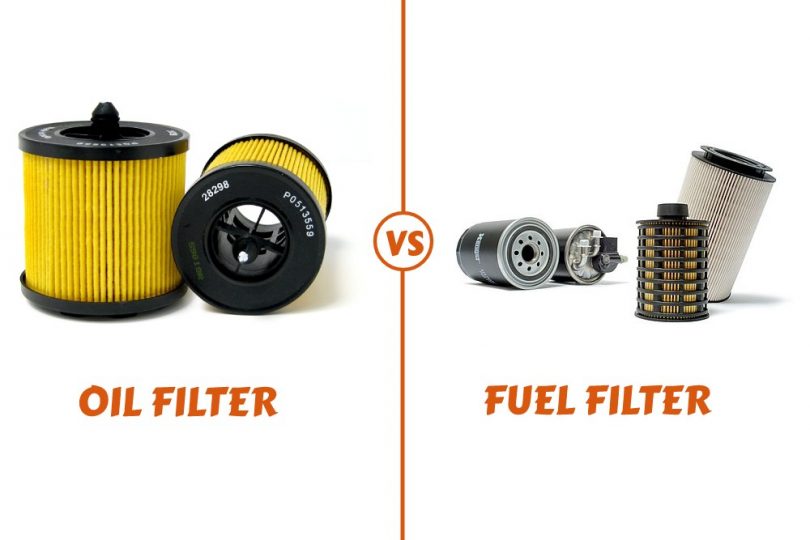
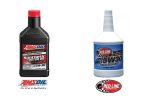
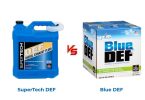


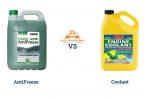


Leave a Comment